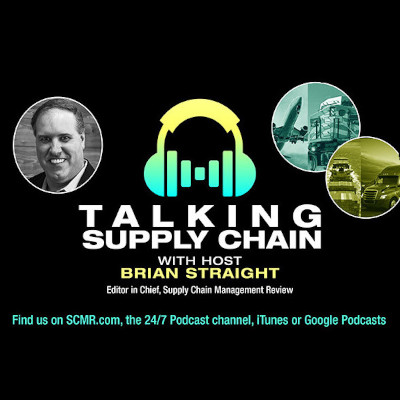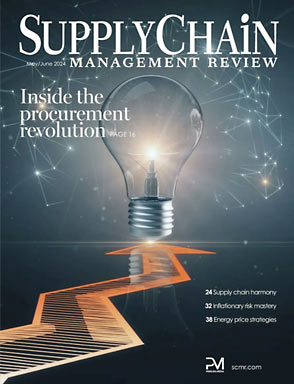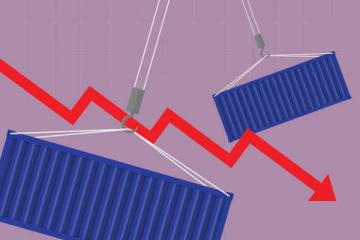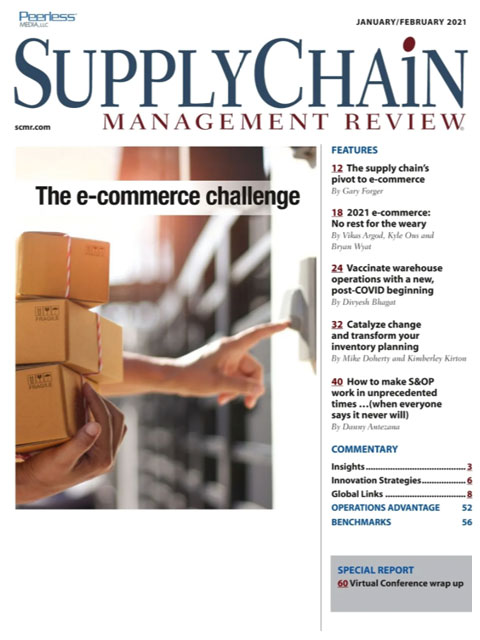Sorry, but your login has failed. Please recheck your login information and resubmit. If your subscription has expired, renew here.
January-February 2021
This morning, I turned on the television and watched the first stretch-wrapped pallets of the just-authorized vaccine being loaded onto a truck at a Pfizer plant in Michigan. From there, the pallets were headed to FedEx’s logistics hub in Memphis where they would be delivered to 153 locations across the 50 states. The event was both historic and mundane: Historic in that the shipments represent the hope of a nation that in the coming months, we’ll begin to put 2020—and COVID—in the rearview mirror; mundane in that this is a scene repeated millions of times a day, without fanfare, in plants and distribution centers across the country. Two of… Browse this issue archive.Need Help? Contact customer service 847-559-7581 More options
Sales and operations planning (S&OP) has a checkered storyline. Some companies use it to great advantage, improving a range of metrics from forecasting to the bottom line. Others get mixed results. Some find that S&OP doesn’t much move the needle of most any metric.
So, the question is: What is the secret to S&OP success? Certainly, there is plenty of help available from process experts to software suppliers and even a consultant or two. All too often, however, even a newly engineered S&OP still looks and feels like a bolt on. Basically, not enough changed along the way to make a difference. And we all know that the definition of insanity is: doing the same thing over and over and expecting different results.
At its essence, S&OP is all about expecting different results. And that is a highly reasonable expectation. Unless, of course, you start in the wrong place.
All too often, people focus on the process of working across departments as different as sales and marketing and manufacturing. Others zero in on the technology that makes S&OP hum. Both process and technology are critical to success here. No doubt about it. But they are not the cornerstone of building S&OP. People are. But it’s not just people with a certain supply chain profile, but people with an attitude—a business-oriented attitude.
This is not theory. I lived it when I worked at the Consumer Health division of Merck KGaA, Darmstadt, Germany. Here’s my story of how to make S&OP a resounding success in unprecedented times—and when everyone else says it will never work.

This complete article is available to subscribers only.
Log in now for full access or start your PLUS+ subscription for instant access.
SC
MR
Sorry, but your login has failed. Please recheck your login information and resubmit. If your subscription has expired, renew here.
January-February 2021
This morning, I turned on the television and watched the first stretch-wrapped pallets of the just-authorized vaccine being loaded onto a truck at a Pfizer plant in Michigan. From there, the pallets were headed to… Browse this issue archive. Access your online digital edition. Download a PDF file of the January-February 2021 issue.Sales and operations planning (S&OP) has a checkered storyline. Some companies use it to great advantage, improving a range of metrics from forecasting to the bottom line. Others get mixed results. Some find that S&OP doesn’t much move the needle of most any metric.
So, the question is: What is the secret to S&OP success? Certainly, there is plenty of help available from process experts to software suppliers and even a consultant or two. All too often, however, even a newly engineered S&OP still looks and feels like a bolt on. Basically, not enough changed along the way to make a difference. And we all know that the definition of insanity is: doing the same thing over and over and expecting different results.
At its essence, S&OP is all about expecting different results. And that is a highly reasonable expectation. Unless, of course, you start in the wrong place.
All too often, people focus on the process of working across departments as different as sales and marketing and manufacturing. Others zero in on the technology that makes S&OP hum. Both process and technology are critical to success here. No doubt about it. But they are not the cornerstone of building S&OP. People are. But it’s not just people with a certain supply chain profile, but people with an attitude—a business-oriented attitude.
This is not theory. I lived it when I worked at the Consumer Health division of Merck KGaA, Darmstadt, Germany. Here’s my story of how to make S&OP a resounding success in unprecedented times—and when everyone else says it will never work.
SC
MR


Latest Supply Chain News
Latest Resources

 Explore
Explore
Business Management News
- Inflation continues to have a wide-ranging impact on supply chains
- Strategic cost savings differ from cutting costs
- Planning fatigue may be settling in
- Inflation, economic worries among top supply chain concerns for SMBs
- April Services PMI declines following 15 months of growth, reports ISM
- Attacking stubborn COGS inflation with Digital Design-and-Source-to-Value
- More Business Management
Latest Business Management Resources

Subscribe

Supply Chain Management Review delivers the best industry content.

Editors’ Picks






